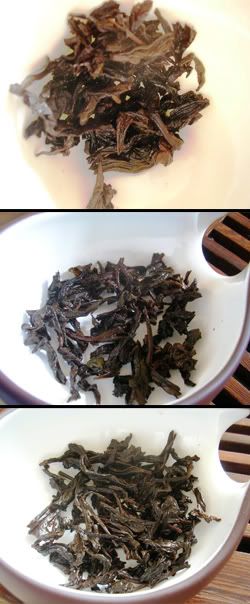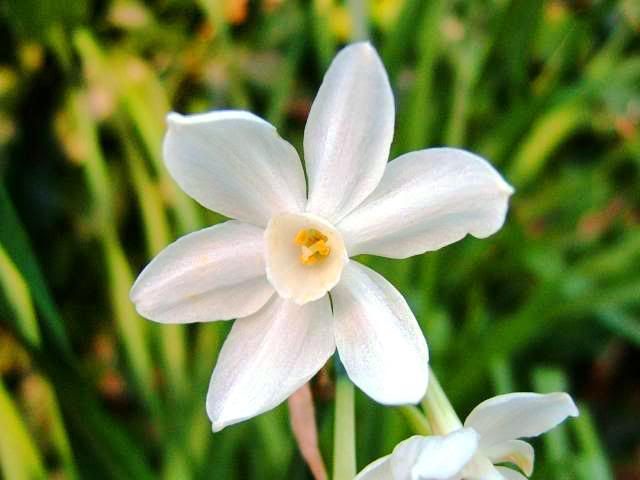One of my crowning joys was the Metamorphosis of Narcissus, for whom readers will not need reminding of the myth in which the reknowned beau Narcissus fell in love with his own reflection, and was metamorphosed into a flower. Dali had a typically crafty slant on this subject which has proven so rich in inspiration for some of my favourites poets and artists (Ovid, Keats, Waterhouse to name just three):

Do please click on the image to view the enlargement, if you're unfamiliar. As with most of Dali's paintings, it rewards close inspection.
Of course, the subject is shown leftmost, the kneeling figure of Narcissus, looking down into his own watery eyes. On the right is his metamorphosis, a stone hand holding a hatched narcissus papyraceus, echoing the outline of the infatuated boy in the visual playfulness so beloved by Dali (and his undergraduate admirers).
A warning of the dangers of introversion, self-absorption, lack of humbleness.
This entry concentrates on three shuixian, the Chinese narcissus, or "water sprite" flower. Fresh and crisp as the flower, or the self-centred indulgence of Ovid's myth?
---
 Three samples from Teamasters, Stephane notes that they originate from one Mr. Wang, a sprightly octogenarian with an apparent talent for roasting. Accomplished reviews of these teas have previously featured in the Teamasters blog, Teawarden, and Dodd's place.
Three samples from Teamasters, Stephane notes that they originate from one Mr. Wang, a sprightly octogenarian with an apparent talent for roasting. Accomplished reviews of these teas have previously featured in the Teamasters blog, Teawarden, and Dodd's place.These teas are (a) 2004, (b) 1997, (c) 1992, appearing top-to-bottom, respectively, in the accompanying photographs.
10cl nongxiang pot; Caledonian Springs mineral @ 90C; 2 scoops; 1 rinse.
Dry leaves:
(a) Long, twisted; typically sweet aroma.
(b) 2cm dark and twisted - the norm. Usual nongxiang aroma.
(c) Darker brown than its peers, mainly through the absence of the chocolate mid-browns.
12s, 12s, 20s, 45s, 60s, 90s:
(a) Foaming from the rinse, this isn't the cleanest tea. Highly typical roasted aroma, with some charcoal, rapidly turning sweet in the lengxiang. Is this any different to all those roasted tieguanyin?
Sourness. A powdery texture on the roof of the mouth. Quite bland. A simple, tangy roasted tea, with chocolate and malted bran in the aftertaste.
(b) As SD noted, this is much more interesting than its younger brother. Spicy, sweet beidixiang, which turns into burned sugar. Straight medium-orange soup.
Hidden by the ubiquitous roasting flavours is a light creaminess in the finish, which is very welcome. The overall midflavour is dominated by something approximating plain popcorn: a granular, cornlike flavour.
 Much better during the third infusion as the frustration of the roasting, which masks rather than complements, is drawn back. More gentle flavours begin to shine, particular the creaminess. Caramel in later infusions.
Much better during the third infusion as the frustration of the roasting, which masks rather than complements, is drawn back. More gentle flavours begin to shine, particular the creaminess. Caramel in later infusions.(c) Pure orange, perhaps lighter than the previous two, which is contrary to expectation, given the darkness of its leaves.
"A very thick texture, so rich." I have to agree; this has a higher viscosity and a smoother feel, perhaps a product of repeated roasting, or perhaps due to its maturity.
"More rounded and smooth. Very pleasant, but not thrilling."
A long, powdery roast - quite akin to the class of bed-time drinks based on malt. "More like tobacco, coffee." Quite satisfying in its smooth, gentle approach and delivery, but there is little complexity.
The roast becomes less particulate, and more fine as infusions progress. It contrasts with the absurd roasting of the ever-horrific wulong from Whittards that we recently encountered.
It seems hard to overbrew this tea; it is indelicate.
The basic roast recedes around the third infusion, making way for something tasting a little more of the constituent leaf, which is enjoyable. A turning-point has been reached in potency, however, and we get the impression that it will be down-hill for the fourth infusion.
I refuse to give up on this particular tea, however, simply due to its primacy. When this tea was being picked, I was completing my GCSEs at school, fifteen years ago. it would be a violence for this tea to come so far, over so many years, to be treated with disregard. And so, we drink. Slowly and patiently and attentively.
The fifth and sixth infusions retain their colour well, though the pleasant smoothness cannot carry it too far.
 Used leaves:
Used leaves:(a) Long, dark, standard. A decent grade.
(b) Uninspiring, but it is hard for me to be inspired by the appearance of nongxiang wulong, much like a shupu. No matter how decent, the final appearance is almost always minimally informative.
(c) Quite whole, which is good to see for one so elderly. Not much integrity in the structure, which is perhaps to be expected after so many re-roasts.
Overall:
(a) Unremarkable. Note my bias against nongxiang wulong, however. This is priced fairly, being a "daily tea" priced at "daily tea" levels.
(b) Decent enough, yet like so many others the roasting seems to homogenise rather than add character. I wouldn't like to see nongxiang wulong disappear, but I suspect that it won't be me keeping the tradition alive.
(c) Better. Much better, in fact. The mediocrity of the 2004 has been smoothed, mellowed, enriched, and generally given the benefits of the gentle caress of the passing years. Could we only hope for such an effect upon ourselves. Worth keeping.
So, then, introverted youth or delicate flower? These samples cover the spectrum, with the 2004 very much involved with itself, revealing little to us, while the 1992 is a gentle breeze, turned out towards us. Quite the variety of sensations.


You're not an undergrad anymore, and I can say you've also graduated from this little educational sampler. My educational intent with these 3 roasted Shui Xian was to show the Metamorphosis of an average, a little dull, self absorbed youngster (to take your vocabulary) into a more and more interesting old tea. Probably this 2004 tea feels some 'burnout' (like after cram school) and needs to go through more rough roastings (first job, marriage, kids...) and periods of rest to develop a more complex and interesting personality.
ReplyDeleteSo, really, I give you a A+ for capturing so well what these 3 teas had to tell! (I suggest you try the roasted TGY next time. That one is my favorite from Mr. Wang.)
Educational it was indeed, thanks again. It's a very rare opportunity to try such mature wulong, let alone one created by such a mature gentleman as Wang-xiansheng. When I'm 80, I want to be drinking tea all day, too.
ReplyDeleteI like the idea that going through the "rough" develops a more interesting personality - there certainly is a silver lining to every dark cloud.
Toodlepip,
Hobbes